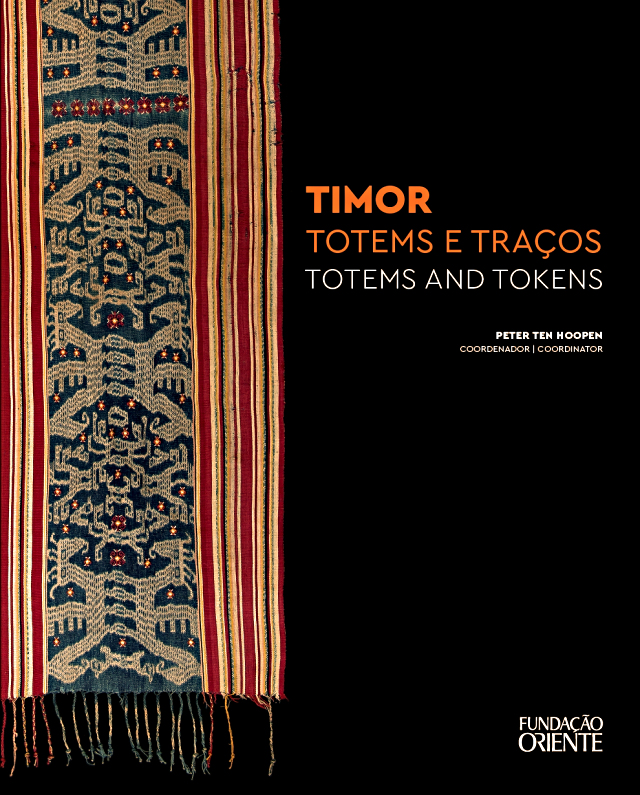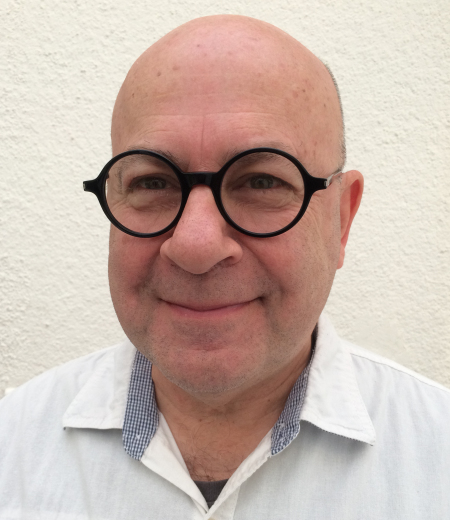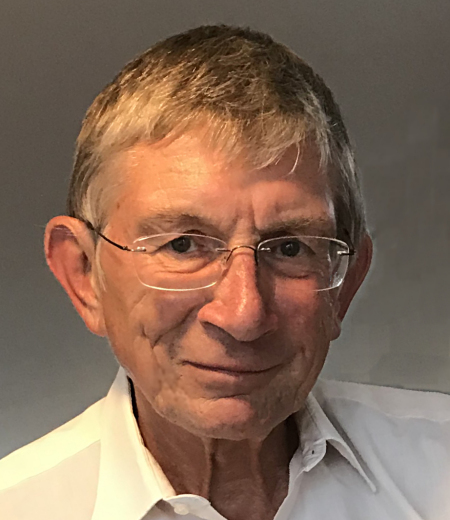
|
 From 12 December 2019 till 15 March 2020 Museu do Oriente in Lisbon, Portugal, exhibits an important group of ikat textiles from West and East Timor under the title �Timor: Totems and Tokens�. Shown are 70 examples from across the island which showcase its great regional diversity. The majority come from Peter ten Hoopen's 'Pusaka Collection', a few from the Fundação Oriente and the Georges Breguet collection. From 12 December 2019 till 15 March 2020 Museu do Oriente in Lisbon, Portugal, exhibits an important group of ikat textiles from West and East Timor under the title �Timor: Totems and Tokens�. Shown are 70 examples from across the island which showcase its great regional diversity. The majority come from Peter ten Hoopen's 'Pusaka Collection', a few from the Fundação Oriente and the Georges Breguet collection.The exhibition will present a number of rare and very beautiful examples of the island's extraordinarily rich ikat culture, and stand out by the average age of the cloths on display: most are early 20th century, a few older. The relatively advanced age of the examples allows us a deep glance into time � into a period when ikat textiles were typically made with an internal movitation, for local and largely ceremonial use, with its important aspects of identification and ostentation. Included in the exhibition are 20 ikat textiles from Timor-Leste, a former colony with which Portugal still maintains close ties. The long period of political unrest in East Timor during World War II and again after the departure of the Portuguese in 1974 caused the majority of its textile heritage to be destroyed and prevented collection, so that now the chance to see a substantial group of older specimens represents a rare opportunity. Some of the more stellar pieces from East Timor are recent acquisitions of rare old textiles from Suai-Loro that became available when the local ruler needed funds to renew his adat house, the family's place for ritual. Paradoxically, a few heirlooms were sacrificed so that the traditions could the better be maintained. They now enrich what we know about the ikat culture of this part of East Timor. The exhibition will live on in the 192 page catalogue Timor: Totems and Tokens, edited by Peter ten Hoopen with contributions by Jill Forshee, Pierre Dugard, Georges Breguet and Linda S. McIntosh. Jill Forshee builds on her earlier scholarly work on Indonesian culture, in particular her recent collaboration with Roy Hamilton and Joanna Barrkman on Textiles of Timor, and relates touching personal stories of weavers in Timor-Leste. Pierre Dugard shares insights in Timorese motifs that he acquired during his years of collecting and documenting textiles on the island, often living with weaving families. Collector and scholar Georges Breguet introduces us to the beautiful and rare horse blankets of the Timorese nobility, known from only a few examples. Linda McIntosh comments on the ikat textiles in the exhibition from the perspective of a Southeast Asia generalist, using her experience in presenting the Tilleke & Gibbins Textile Collection. To the editor befalls the task of introducing the island � which he aims to do in a reflection on aspects of the island that appear insufficiently lit � and describing the textiles in the catalogue section. Timor: Totems and Tokens ISBN: 978-972-785-115-7 |
Contributors
 |
Jill Forshee received her doctorate in Social-Cultural Anthropology from the University of California, Berkeley. Her publications include Between the Folds: Stories of Cloth, Lives, and Travels from Sumba (2001) and Culture and Customs of Indonesia (2006), as well as numerous articles. As a Fulbright Senior Research scholar, she carried out research in Indonesia and East Timor in 2009-2010. She continued research in East Timor under the auspices of the Fowler Museum at UCLA, funded by the Asian Cultural Council and the University of California Pacific Rim Research Program. |
 |
Linda S. McIntosh takes a multi-disciplinary approach to the study of textiles, combining history, anthropology, linguistics and art history. She received a Masters of Arts in Southeast Asian Studies from the University of Wisconsin-Madison and a doctorate from Simon Fraser University, Canada. She has published numerous articles, books and catalogues on Southeast Asian culture and textiles. Major publications include Art of Southeast Asian Textiles: the Tilleke & Gibbins Collection, which highlights textiles from the mainland, while Thread and Fire: Textiles and Jewellery of the Isles of Indonesia and Timor delves into the material culture of insular Southeast Asia. |
 |
Pierre Dugard graduated from the �cole Boulle and the School of Decorative Arts in Nice. His first trip to Indonesia as an independent researcher in 1980 was followed by many others mainly centred on the western part of Timor. Living alongside weavers in mountain villages he documented their textile techniques, looms and iconography. He has produced various publications and lectured in schools and universities. Parts of his collection were acquired by museums around the world. His contribution to this catalogue was previously published in Le Banian n�16, Association Franco-Indon�sienne Pasar Malam, December 2013. |
 |
Georges Breguet holds a degree in biology and human ecology from the University of Geneva. Since 1972, he has regularly travelled to Indonesia, where he has conducted scientific and cultural surveys, mainly in Bali and Sumba. He collaborates with museums in Switzerland, France and Indonesia, curated many exhibitions and published several books and articles, all devoted to the arts of the archipelago. Email: gbreguet@gmail.com. |
 |
Peter ten Hoopen is an independent researcher and PhD candidate at Leiden University, working on a dissertation titled Ikat from Timor and its Outer Islands, Insular or Interwoven? His previous publications include Linguagens Tecidas/Woven Languages, the catalogue of his 2014/15 exhibition of the same name at Museu do Oriente, and Ikat Textiles of the Indonesian Archipelago, the catalogue of his 2017 exhibition �Fibres of Life� at University Museum and Art Gallery, the University of Hong Kong, the first reference work on the subject to cover the entire 'ikat archipelago'. |

